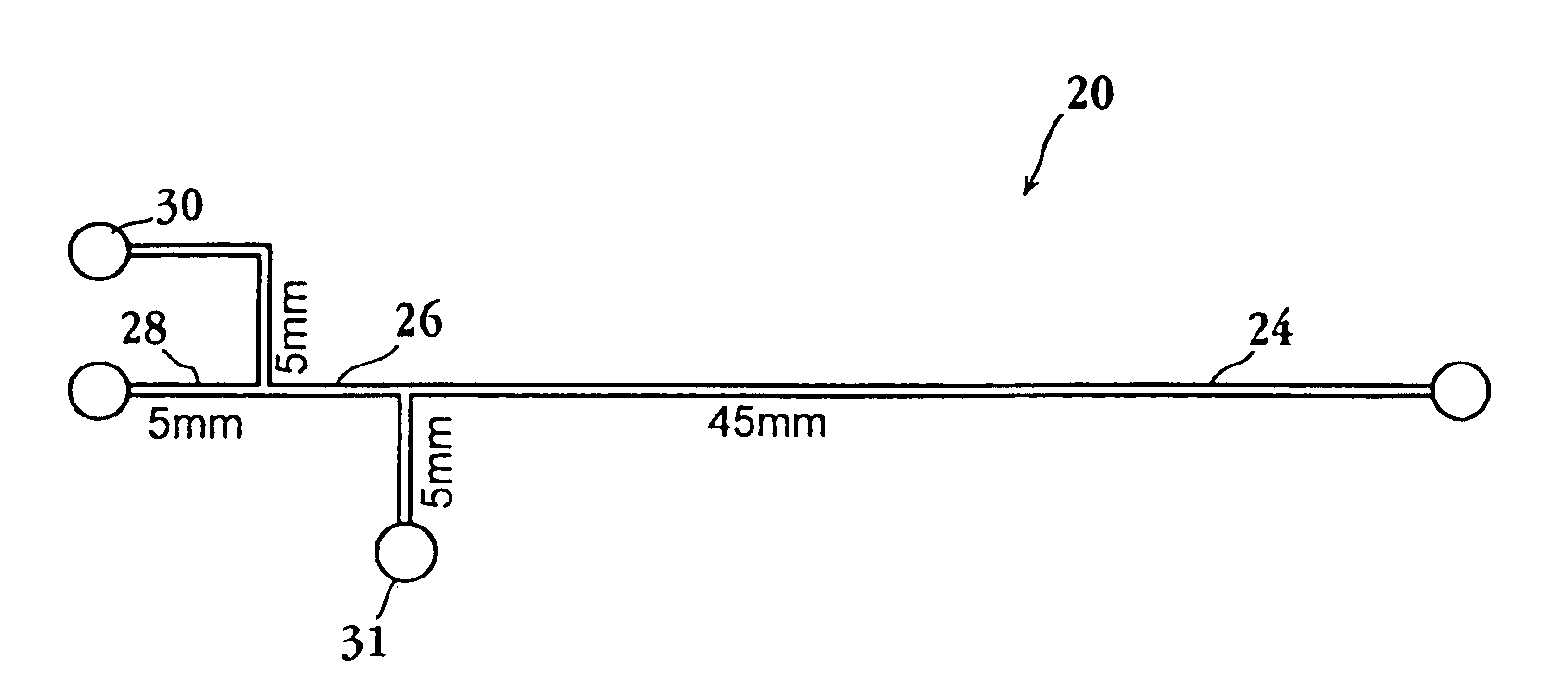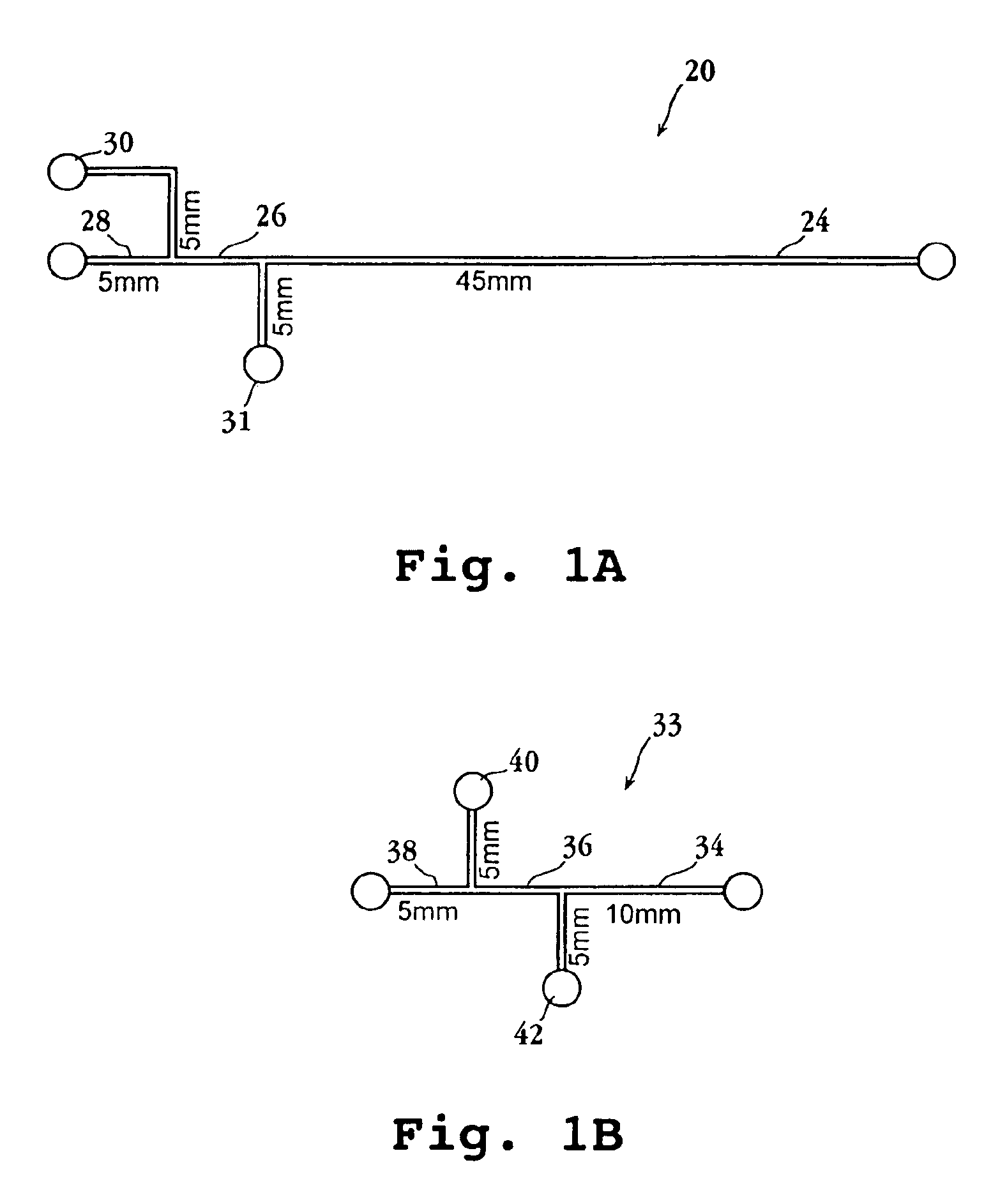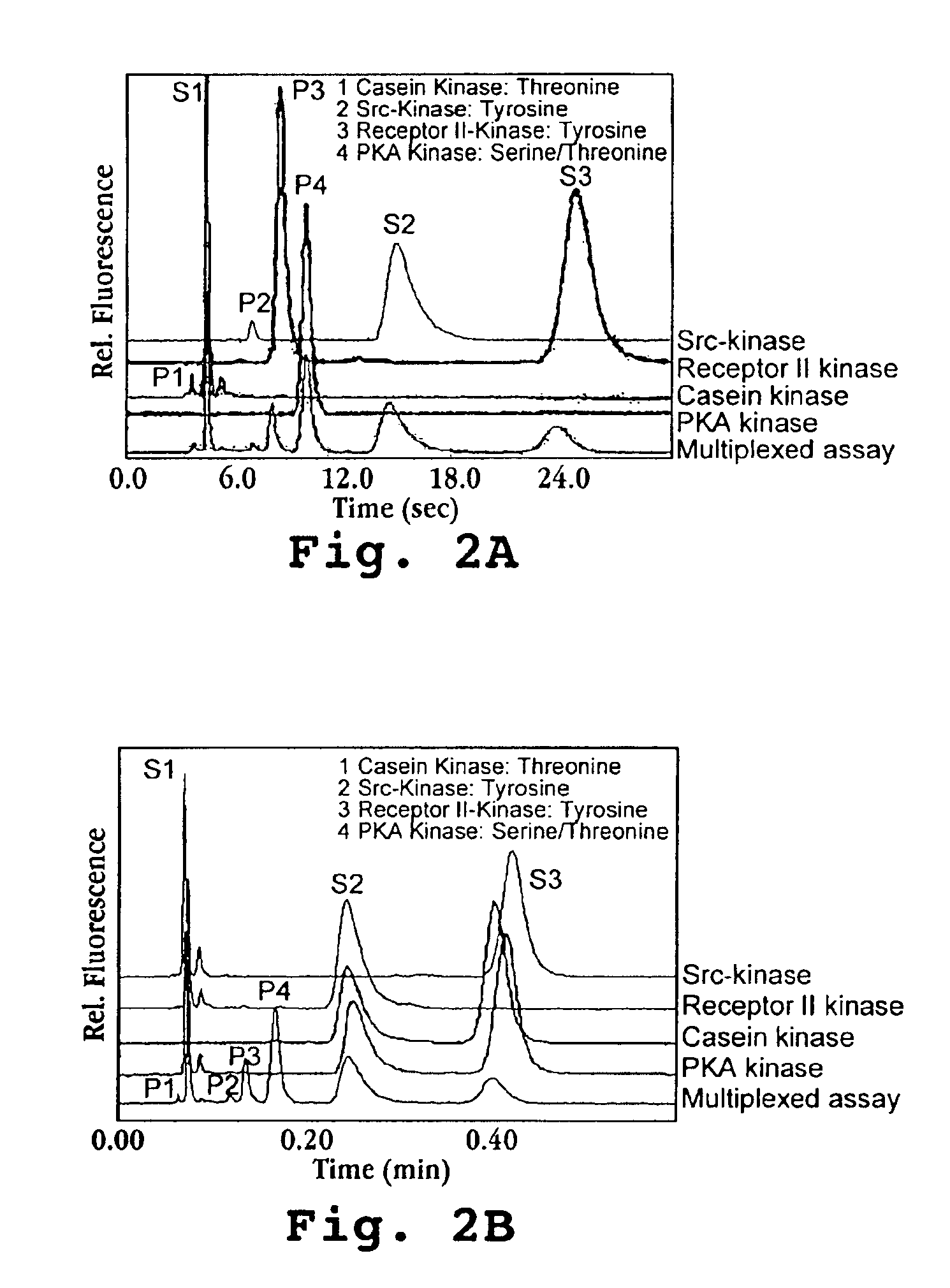Multiplexed enzymatic assays
a technology of enzymatic assays and complexes, applied in the field of enzyme assays, can solve problems such as large number of assay samples
- Summary
- Abstract
- Description
- Claims
- Application Information
AI Technical Summary
Problems solved by technology
Method used
Image
Examples
example 1
Multiplexed Enzyme Assay with Four Kinases and Assay Specificity (FIG. 2)
The assay protocol is the same as described in the General protocol. The enzymes used in this experiment were 3 μL each of casein kinase, src-kinase, Receptor II-kinase and PKA kinase. The substrate for src-kinase was cdc-2 and the substrates for the other kinases were listed above for the corresponding kinases. The total assay volume is 60 μL and is incubated at room temperature for 45 min. To stop the reaction, 10 μL of 100 mM EDTA was added to the assay mixture. Before performing an analysis, 70 μL D.I. H2O was added into the assay solution for dilution of the analytes and the salt. To confirm the enzymatic reactivity, an individual enzyme assay was also performed for each of the 4 enzymes following the same protocol as for the multiplexed assay by using only one enzyme and its substrate in the assay. The peak identification is shown in FIG. 2a.
To demonstrate specificity of the multiplexed assay, the assay ...
example 2
Multiplexed Enzyme Assay with Three Kinases and their Specificity (FIG. 3)
The assay protocol is the same as in Example 1. The three enzymes used are Src-kinase, Receptor II-kinase and PKA kinase. The purpose of this experiment is to show multiplexed assay performance after optimizing the experimental conditions, so as to have balanced amount of products for the enzymatic reaction. For the src-kinase, the optimal peptide is used for a fast reaction. The enzyme amount used in this experiment was 1 μL of src-kinase, and 5 μL each for PKA kinase and Receptor II kinase. The assay was incubated for 60 min before stopping the reaction by adding 10 μL of 100 mM EDTA. Before analysis on the modified LabCard microfluidic device, the assay sample was diluted with 70 μL of D.I. H2O. The specificity was also studied for these three enzymes with one enzyme incubating with substrates for the other two enzymes in one tube. The same procedure and pretreatment were used to stop the reactions and dilu...
example 3
Multiplexed Enzyme Assay with Three Classes of Kinases (FIG. 4)
The assay protocol is the same as used in Example 1. The multiplexed assay is for three classes of kinase, which phosphorylate tyrosine, serine and threonine, respectively. The assay was incubated for 1 hr with 5 μL each for PKA and Receptor II kinase and 3 μL for MAP (Erk-2) kinase. The same procedure as in Example 1 was used to stop the reaction and dilute the assay sample for analysis. The regular LabCard microfluidic device was used for performing the analysis. The injection was done by applying 800 V at well #2 for 60 s while grounding the other 3 wells. The sample is in well #4. The separation condition is: 0 V for well #1, 800 V for wells #2 and #4 and 1500 V for well #3. The separation distance is 3 cm. A relatively long separation distance was required to resolve the components that have similar mobilities.
PUM
| Property | Measurement | Unit |
|---|---|---|
| concentration | aaaaa | aaaaa |
| temperatures | aaaaa | aaaaa |
| depth×80 | aaaaa | aaaaa |
Abstract
Description
Claims
Application Information
 Login to View More
Login to View More - R&D
- Intellectual Property
- Life Sciences
- Materials
- Tech Scout
- Unparalleled Data Quality
- Higher Quality Content
- 60% Fewer Hallucinations
Browse by: Latest US Patents, China's latest patents, Technical Efficacy Thesaurus, Application Domain, Technology Topic, Popular Technical Reports.
© 2025 PatSnap. All rights reserved.Legal|Privacy policy|Modern Slavery Act Transparency Statement|Sitemap|About US| Contact US: help@patsnap.com



